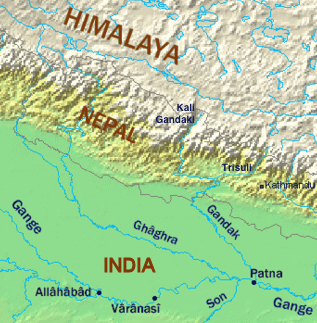
A long-standing dispute exists between India and Bangladesh over the appropriate allocation, and development, of the water resources of the Ganges River, which flows from northern India into Bangladesh. The issue had remained a subject of conflict for almost 35 years, with several bilateral agreements and rounds of talks failing to produce results.
However, a comprehensive bilateral treaty was signed by Indian Prime Minister H. D. Deve Gowda and Bangladeshi Prime Minister Sheikh Hasina Wajed on 12 December 1996 in the Indian capital New Delhi. The treaty established a 30-year water-sharing arrangement and recognised Bangladesh's rights as a lower-level riparian.[1][2][3]
- ^ Robie I. Samanta Roy (November 1997). "India-Bangladesh Water Dispute". American.edu. Archived from the original on 28 April 2008. Retrieved 30 May 2008.
- ^ Haq, Enamul (2012). "Ganges Water Sharing". In Islam, Sirajul; Jamal, Ahmed A. (eds.). Banglapedia: National Encyclopedia of Bangladesh (Second ed.). Asiatic Society of Bangladesh.
- ^ Saswati Chanda; Alok Kumar Gupta (24 January 2000). "The Ganges Water Sharing Treaty: Genesis & Significance". Institute of Peace and Conflict Studies. Retrieved 30 May 2008.
